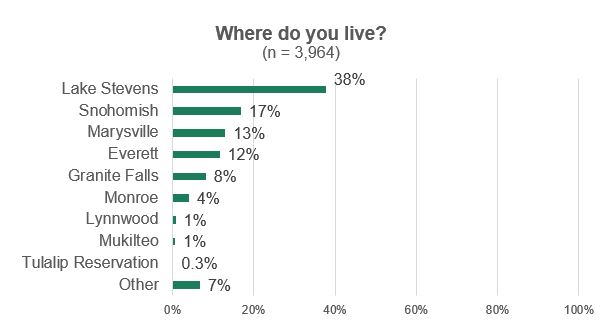By David Rasbach
Our new compact roundabout along State Route 203 at the intersection with High Rock Road and 203rd Street Southeast south of Monroe is unique, to say the least. With a long, skinny island separated from a circular island by a pass-through lane, even our designers don’t know of any similar roundabouts this small.
From above, it looks like an exclamation point, but we hope people who travel through will come to think of the roundabout as more of comma – a place to slow, take a pause when needed and then proceed on your travels.
 |
| A new roundabout opened along SR 203 in late June south of Monroe at the intersection with High Rock Road and 203rd Street Southeast. |
Think of it as two roundabouts nested together, and the rules are the same as any other roundabout we’ve built:
- Slow to 15 to 20 mph as you approach.
- Move counterclockwise around the roundabout.
- Yield to vehicles approaching from your left already in the roundabout.
- Larger vehicles may drive over the center islands for tight turns.
Drivers going northbound on SR 203 traffic may need to yield twice – once when entering the roundabout and again if traffic is passing between the two islands. If you think about it, that’s just following the same rules a second time.
If you travel through the area, you may want to check out our video about driving this roundabout.
 |
| The SR 203 roundabout slows vehicles that used to approach the High Rock Road intersection at 55 mph. |
Roundabouts calm traffic, improve flow and reduce the chances of serious T-bone and head-on crashes. These effects all apply to this stretch of SR 203.
Making a roundabout for everyone
OK, so why does it look so different from any other roundabout?
The design accommodates large vehicles and farm equipment making left turns, fits the existing space and avoids the nearby hill and protected wetlands.
Our engineering team found the unique design was needed to accommodate all the different vehicles that travel through this intersection.
When we began planning, our designers considered a roundabout shaped like a dog bone – long and skinny with “knots” on the ends. They quickly realized that wasn’t going to work.
A lot of large vehicles and farm equipment make left turns from 203rd Street Southeast to northbound SR 203. With a dog bone design, the turn at the southern end would be too tight for these vehicles to make.
 |
| Unlike most compact roundabouts, the new roundabout along SR 203 features two center islands with a lane passing between them. |
Fitting a roundabout in a tight space
Why not build the center island bigger to create better turning angles for those larger vehicles?
In a word – geography. The new roundabout needed to be built in the same space as the old intersection.
To the east is a steep hill. To the southwest there are protected wetlands. There wasn’t space or budget to mitigate the potential impact in either direction.
Making SR 203 safer
We hope people traveling through the new roundabout will adapt quickly to the unique design and follow the same rules they should use at every roundabout. The new intersection is already performing its No. 1 goal of reducing chances of crashes that can lead to serious injuries or worse.
Before construction started, cars flew along this busy rural section of SR 203 between Monroe and Duvall at 55 mph. The intersection is on a curve, adding to the risk people turning from High Rock Road or 203rd Street Southeast could have been hit. SR 203 drivers turning left also faced challenges judging oncoming traffic speed.
National studies have shown that roundabouts create a 37% decrease in overall collisions, while reducing injury crashes by 75% and fatal incidents by 90%.
 |
| Despite its unique design, drivers using the new SR 203 roundabout at High Rock Road should follow the same rules in place at any roundabout. |
We always monitor and evaluate all changes we make. This new roundabout is no exception, so we’ll be sure it’s working as designed.
Yes, we know – not everybody loves roundabouts. This one requires adjustment, just like any change. But please give this unique little roundabout a chance. Slow down and follow roundabout rules and signs on the road. Make sure you stay distraction free as you drive through the area (and everywhere). And please have patience with others still learning.
We believe you’ll soon enjoy improved safety and traffic flow in the area.





